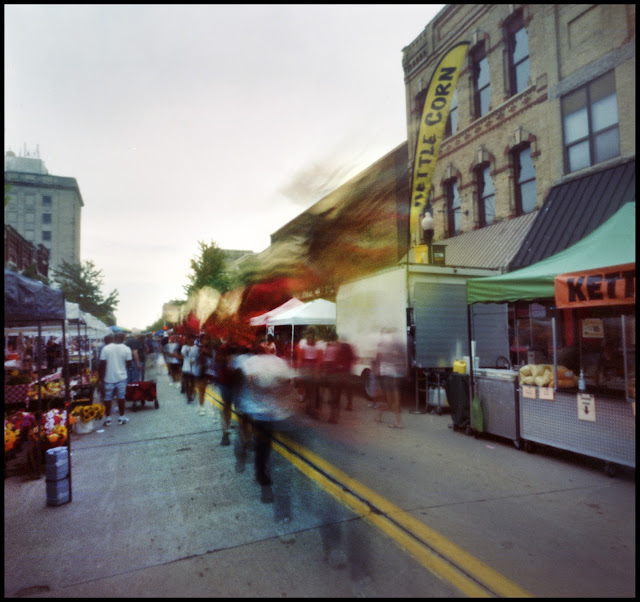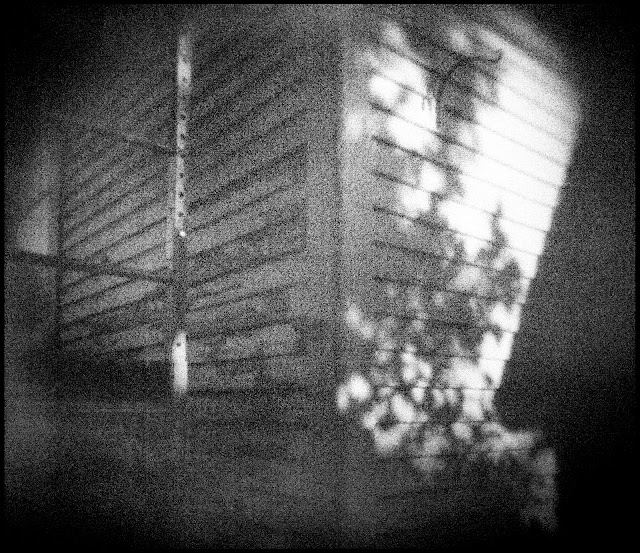The last exposure of my latest roll of color film was early in the morning after the previous evening's deadline for dropping off film at Camera Casino. These negatives, plus the negatives from another roll that included the first half of
my adventure at the Brennand Airport Fly-in, wouldn't come back for
over two weeks.
There was plenty of time to stew about this before my next opportunity to send the film off. I did a search for C-41 kits but either they wouldn't ship it at all; the shipping would take almost as long as waiting for the lab; or would cost twice as much as the kit to get it here earlier. Just a few minutes later, there was an ad on Facebook by Adorama for the Arista.edu liquid quart kit, with free two-day shipping. How did they know that's just what I needed?
C-41 color developing isn't really hard. Thanks to my culinarily sophisticated son, I have a soux vide heater to temper the chemistry, but that's where the trouble started.
My only option to develop 35mm film is my antique bakelite Yankee tank that I've used for almost all the film seen on this blog (It's adjustable up to 120). That meant I would have to do each roll one after the other. After worrying how to go about that and maximize the capacity of the kit, I decided just to pour it back in the quart and increase the time 8 percent for each pour as recommended, even if it was just one roll of film. That seemed to work fine.
After bathing the chemistry for several hours and determining that the heater had to be set at 104°F to have the chemicals at 102°F, I unplugged the heater with its LEDs so I could load the film in my tiny darkroom. There was a little trouble getting the first roll started because of a ragged torn-off edge, but it loaded easily for about half the roll, then progessively started binding up to the point I could hear crackling. It felt just like the film was getting wet and sticky. Maybe it was that ragged leading edge? After several minutes, I put the film in the tank, forgetting that there was a big hole in the top without the reel/agitator inserted, and turned on the lights to get a scissors to trim that end and dry the reel. Luckily I put the tank in the shadow of the water bath tub. Tried again and it felt the same, crinkling and all. Finally got it so the end was wrapped around the outside.
I was meticulous about trimming the end of the film and drying the spiral slot with the edge of a folded paper towel for the second roll, but had the same experience.
My mistake was probably trying to do this in a five by six foot room that's had a soux vide cooker heating water to 104°F in it for three hours. The film most likely absorbed enough water from the air to get sticky against the hard bakelite while I sweated in the humidity. For my 74th birthday, Sarah has wonderfully gotten me two Paterson adjustable reels out of a more bespoke plastic so I can avoid this in the future - and maybe load the film before heating the chemicals.
Miraculously, I still got a little over half the exposures from both rolls but you might notice a few streaks, flares and tightly cropped images in that Brennand Airport piece.
The Populist was full of film to cover the tenth anniversary celebration of the opening of Winnebago Bicycles. They got the city to leave the 400 and 500 blocks of Main Street closed after the Farmers' Market for drag races.
Drag racing on Main Street!! How can you resist that? Without any training or practicing a single time, I entered the competition. Sean Lynch, current owner, and the rehabilitator of my 1975 Takara Standard, addressed the entrants in front of the store. It had been a beautiful day, but all eyes were on the sky behind him.

The storm kept approaching and the leading winds blew down Main Street as we gathered at the starting line. In the second heat of the first round, I was matched with the young man at the left with the little green bicycle modified especially for drag racing. What's a little equipment and a half-century age differential? I got off pretty well and had shifted a couple times when I encountered severe wind shear at the intersection of Church and Merrit Streets that forced me to downshift again, but helped me understand when it happened again a week later at Brennand Airport. The last heat of the quarter-finals occurred in a furious downpour. My opponent went on to make it to the semi-finals, which they called off because of the slippery wet pavement and drew lots to determine who won the grand prize.
My gear selection for
EAA.
For the first hour I just wandered around trying to scout out what to do with the medium format film and did a few with The Populist. The only survivor was of the Boeing Dreamlifter from the veranda of the Boeing Pavilion at the end of Boeing Plaza.You gotta give it to Delta for putting an Airbus on display there.
Lunch outside at Fratello's by the Appleton Dam.

A little Halloween snooping while getting camera-making supplies from Michaels.
The color film reproduces the ever popular glow-in-the-dark green rather well.
Eyeballs are suddenly very popular everywhere.
I photographed all the vegetables from the Farmers' Market to get the film used after the fly-in, but only the potatoes made it.
Andy and Kristin visited and we went to Beckett's next to the Fox on a sunny but windy day.
Coconut Shrimp.
We visited the Rodin exhibit at the Paine Art Center. With my new desktop tripod, the camera can be sort-of-steadily hooked at certain angles over the information lecturns at the door to each room. A small study for The Burghers of Calais is on the table in the library.
The breakfast room.
In the formal garden.
Plenty of time to get an exposure of a music major in the shade in a children's garden with a xylophone.

Returned to Fratello's and their new dinner menu at sunset.
Finishing the roll at breakfast before their flight, just too late for the Camera Casino deadline.
Except for the high temperature and adjustments for developer capacity, C-41 is hardly different than black and white. There wasn't much difference from lab processing (except for the damage), but almost every negative needs adjustment to levels and color balance anyway. Now I have to shoot at least seven rolls of 120 before the kit goes bad. After several paragraphs about capacity and adjustments,
the data sheet notes that with digital scanning and post-processing color, you can probably develop lots more film and get longer storage out of it, but it's your decision.
The Populist has a .15mm electron microscope aperture 24mm from a 24x36mm frame. The film is Lomography 100 developed in Arista.edu's liquid kit.
























































